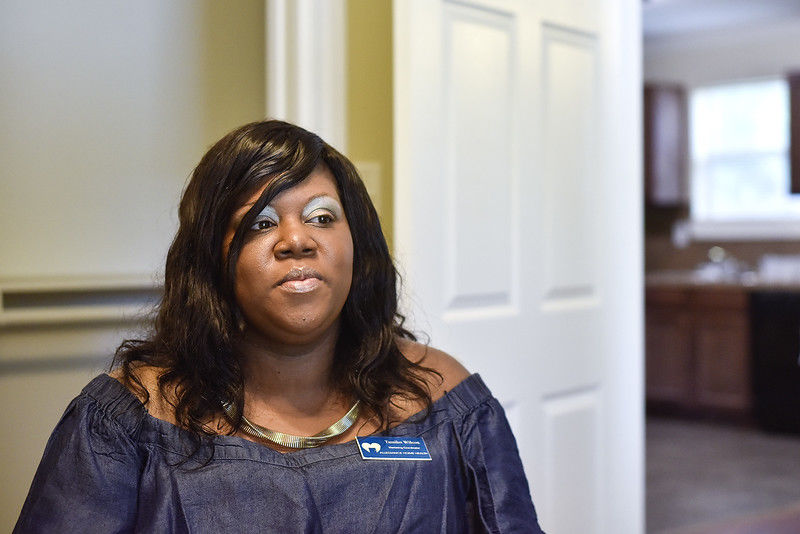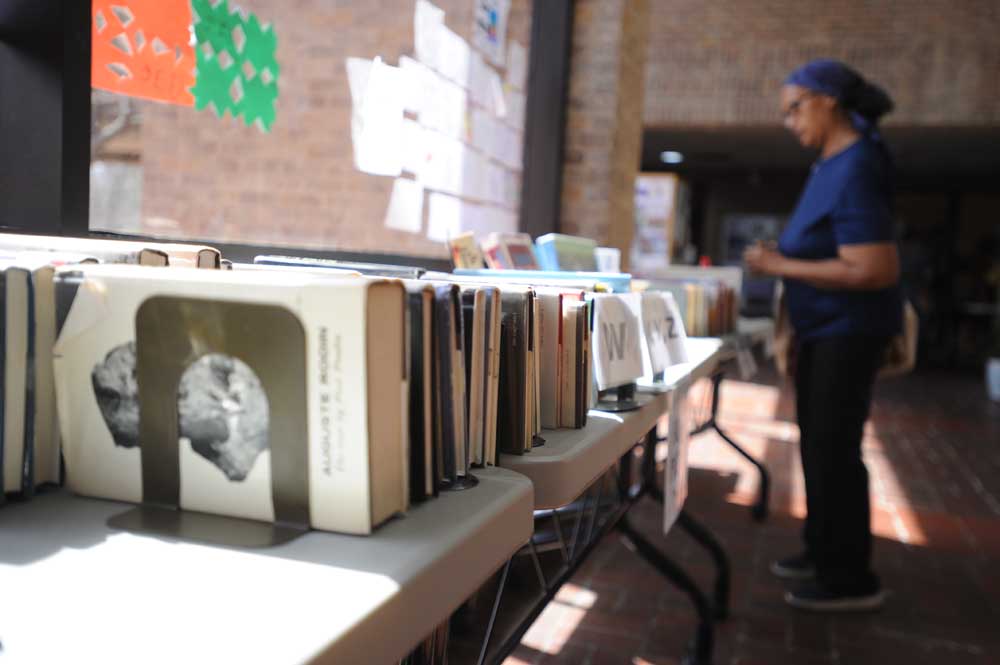Two receive new homes through PATH’s transitional housing program
Published 6:37 pm Wednesday, May 31, 2017

- Tamiko Wilcox speaks with the media about her reaction to seeing her new home for the first time during an open house in Tyler, Texas, on Wednesday, May 31, 2017. PATH celebrated the completion of the construction of two new energy-efficient, three-bedroom brick homes for its housing rental program in North Tyler. (Chelsea Purgahn/Tyler Morning Telegraph)
Walking into her new house for the first time, Cherrayvette “CC” Clayton could not contain her joy.
She marveled at the new house smell, the new washer and dryer, the spacious bedrooms and her own personal bathroom and walk-in closet as she toured the house that will soon be her home.
“When you put yourself in the back and you put God in front, he will work for you,” Ms. Clayton, 51, of Tyler said. “All you gotta do is get out of the way. We know what’s best, but he know what’s better.”
Ms. Clayton was one of two Tyler residents who toured their new homes on Wednesday when the nonprofit PATH, which stands for People Attempting To Help, unveiled the energy-efficient, three-bedroom brick houses for its housing rental program.
The houses were built in partnership with the City of Tyler’s Neighborhood Services Department and the Tyler Community Homes Community Housing Development Organization.
About $190,000 in funds from the U.S. Department of Housing and Urban Development funded the construction, which began last year.
These are the 13th and 14th houses built in Tyler in the past 10 years with more than $1.2 million in HUD funds. They represent the 54th and 55th PATH houses.
“There’s such a need for affordable housing in our area,” PATH Executive Director Greg Grubb said, putting the number in need at 10,000 families in the Tyler metropolitan area.
The houses will serve as transitional housing for people in PATH’s transitional housing program. The occupants will pay $650 in rent plus utilities.
As part of that program, which typically lasts about two years, participants, who must meet certain qualifications, set goals for their lives and with the support of PATH staff seek to attain those goals, including housing stability as a new homeowner or in market rental housing.
“It’s just not a come in and sit,” PATH Executive Director Greg Grubb said. “It’s setting goals, trying to do something to achieve financial stability.”
For Ms. Clayton, moving into a new house is not about her comfort and stability, it’s about her children.
Though they are not her biological children, she agreed to foster them several years ago when Child Protective Services got involved in their lives.
She now has custody of the three children and has been raising them in a two-bedroom apartment.
Though they have had many challenges in their lives, the children are progressing with the support of Ms. Clayton, their schools, family and friends.
“They’re still with me and they’re growing and they’re learning,” she said.
Even though she was unable to have children of her own, she said God has given her what she has needed to raise these children. That includes providing this house.
“This is for them,” she said. “It’s never about me. It’s about what I can do for them.”
Tamiko Wilcox, 42, of Tyler plans to move into her new home next to Ms. Clayton in late June.
She said she is honored to move into a new house, especially one that is beautiful, safe and affordable.
“I love the kitchen and the living room,” said Ms. Wilcox, who works as a marketing coordinator.
Raquel Gandarilla , PATH’s housing case manager, said the move into these houses signifies a new beginning for these women.
And that new beginning is something they are both grateful for.
“We know what’s best, but He knows what’s better,” Ms. Clayton said of God. “When He does something, He does it big.”
TWITTER: @ TMTEmily
A CLOSER LOOK
PATH’s Transitional Housing Program spells out its purpose in its name. It’s about making change.
The program is for people who recognize challenges in their lives and are ready to seek help in addressing and overcoming those challenges particularly with an aim to achieve financial and housing stability.
For some people this means addressing credit issues. For others, it means getting more education and/or improving their job skills. Some people just need guidance about how to better manage their money.
“Everything when you’re living in poverty is at that very moment,” PATH Program Director Andrea Wilson said.
The goal of this program is to help people reach a point where they can think about and live for the future.
Emily Guevara






